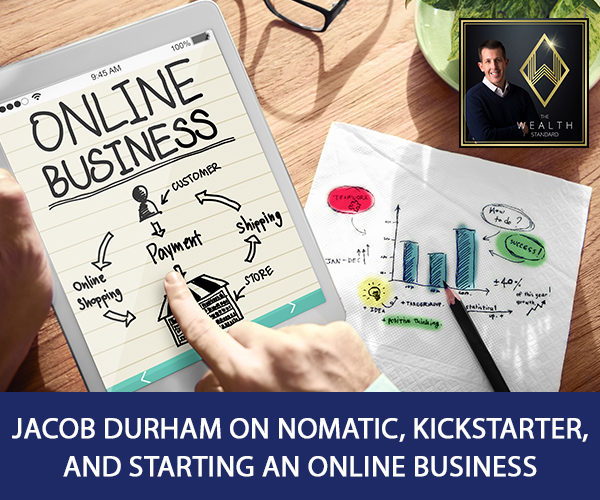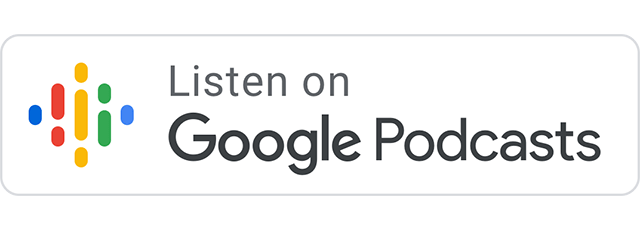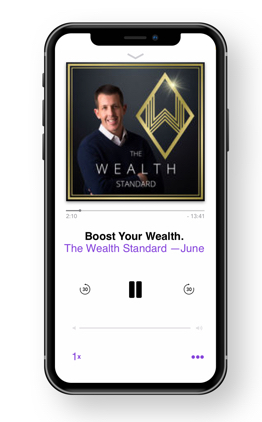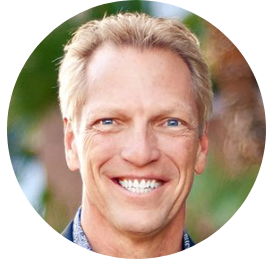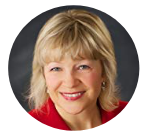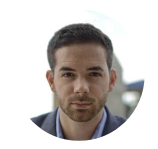Jacob Durham on Nomatic, KickStarter, And Starting An Online Business
Podcast: Play in new window | Download
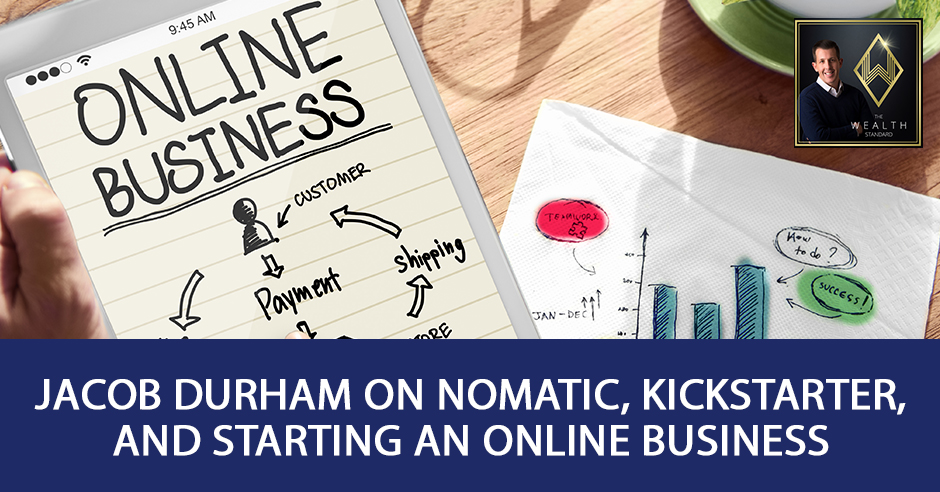
If we envision selling an innovative product that we thought about, then we have to have the tenacity and courage to face the ups and downs of managing a business. In the current digital age, selling and advertising your products online is the best way to go. In this episode, Patrick Donohoe interviews Nomatic owner and co-founder, Jacob Durham, about how he managed his online business with his team which started on KickStarter. Jacob also tackles why we should learn to accept and retry after experiencing failure, and how his product sales increased using Facebook ads, among other topics on business.
—
Watch the episode here:
Listen to the podcast here:
Jacob Durham on Nomatic, KickStarter, And Starting An Online Business
I’m excited to be with you. I’m excited to introduce my guest. Before I do that and give you a little story, I tell this story in the interview as well. I wanted to remind you that the offer that I extended over the last couple of podcasts is still live and valid. It is a pretty significant discount to come with me to Tony Robbins’s Unleash The Power Within, which is going to be in San Jose in March 12th through 15th. Go to the website, TheWealthStandard.com to connect with my man over at Tony Robbins Organization. His name is Jeffrey and he’ll take care of you and get you that discount. I can’t wait to see you there.
If you have resonated with at least the theme of the last few months about entrepreneurship, this is an event that I believe will change your life. It’s an event that certainly changed mine as well as countless other individuals. If you have that urge, that itch that you want to scratch, the itch of entrepreneurship and have ideas and have means, but yet your psychology isn’t allowing you to make that leap, this is an event for you. This will change the way in which you view your business, your profession, yourself, your relationships. It’s incredible. You will love it. I can’t wait to be there with you. If you are interested, go ahead over to our website and you will find that information.
My guest is Jacob Durham. This is awesome. It’s a local company. It is a backpack that I purchased a couple of years ago. It’s a brand that this individual is one of the founders of and it’s called Nomatic. It’s Nomatic.com. It’s such an inspiring interview, an inspiring story. You’re able to see a lot of the principles that we’ve talked through over the course of this season in practice. It’s also looking at how serendipity works where when you have some will, a dream, an urge and the magic that can happen because of that is awesome to see. You’re going to hear that from Jacob.
Jacob is an awesome guy you can see the spirit and the drive in him. It was an awesome interview. I researched this company for several months, purchasing a backpack. I have to travel and I wanted something that was durable as well as simple, but yet could fit everything. The company’s incredible. I had a rip in my zipper a few months ago. I took a picture, submitted it, they send me a brand new one within a couple of days. It’s an incredible company. They’re now into more than wallets and backpacks. They’re into all sorts of stuff. You definitely want to follow them. If you’re in the market, it’s definitely a good product to pick up.
The story is there’s like a cultish following behind it because I was in Europe past summer at an event. I was on a row and I looked over and saw my backpack. It wasn’t my backpack, but it looked like my backpack. I looked there and I was confused because I was like, “Why is it there and I’m here?” I noticed mine was right there. I looked at the guy, he looked back at me, he looked out at my backpack and we gave each other the bro wink. That was pretty cool because Nomatic is one of those brands where you can recognize the bag. It’s a cool, sleek-looking bag. If you’re in the market for one, it’s a great product.
Jacob also has an amazing story. Him and his cousin are the ones that started the business. It started on Kickstarter and they did some more crowdfunding campaigns. That’s how they seeded their ideas. It’s such a powerful lesson. You will definitely get a kick out of it. It’s a great almost final episode this season, but I can’t wait for next season as well. We’re going to get into a little bit different topic, much less philosophical, although I’m going to interweave some of the philosophy into it. We’re going to be talking about investment strategy and not typical investment. We’re going to talk about the weird investments, the stuff that you probably haven’t heard of before.
I’m talking more in depth about what I would like to learn as well as what I would love you guys to learn as well. That’s it. If you like what you read, go and give us a good review on iTunes. That helps. They are narrowing down the number of podcasts that are on iTunes. If you don’t have good ratings, there’s not going to be most exposure to new audiences. We appreciate the support that you have given me in the past. Thank you so much for the support. The feedback that I continue to get about the podcast is inspiring to me and I can’t wait to bring you more amazing content. Let’s get to the interview.
—
I have Jacob Durham. He’s a cool guy and has an amazing business. It’s local but he is one of the Cofounders and Owner of Nomatic. This is Nomatic. This is a new bag because I got a one a few years ago and the zipper came loose. I took a picture, submitted it and got a brand-new bag within three days. This thing is awesome. I chose it because I have to travel. This thing is amazing. First off, the durability, from a travel perspective, you can literally fit everything in it, but Nomatic isn’t just backpacks anymore. We are going to talk through what you are up to in your journey as entrepreneurs.
I love that we’re doing this type of episode at the end because we’ve gone through the philosophy of the entrepreneur. We’ve had tons of different guests from that perspective. We’ve also had those that have been part of other entrepreneur journeys like coaches or authors. I know we’ve also had a couple people that were part of going from zero to nothing or zero to one. It’s awesome to have you here because I didn’t know you guys were in Utah. Utah is a small community. It’s big but it’s small, especially from the business world. It’s cool that you’re here and I can’t wait to talk about Nomatic. First off, did you ever think you were going to be an entrepreneur? Did you have that seed inside you or was this just random series of events and serendipity?
Do what you love and you will never have to work a day in your life. Click To TweetMy dad is an entrepreneur. My dad’s brother is an entrepreneur. It’s in the family, we call it a sickness because we can’t stop doing more and more. I always dreamed of doing it. When we started this, it wasn’t like, “Let’s start a business and let’s get to this much. Let’s build to this size.” It’s like, “Let’s start a project, get some cash, learn a little bit about the business and then we’ll stop and I’ll continue with my normal day job.”
Is that how Nomatic started? This is one of the first.
It’s pretty much the first where I’ve tried my hand in making serious money. We were trying to raise $10,000 on Kickstarter with our wallet.
It started with a wallet then it went to the backpack.
We did the wallet, then a planner. We did a travel bag, like a duffle and backpacks. We have done about nine Kickstarter so far.
Now you have influencers like Lewis Howes. Who are some of the other influencers that are promoting your stuff and using your products?
Lewis Howes is a big one that we’ve been able to become friends with. He’s an awesome guy. Peter McKinnon is somebody that we’ve worked with. He’s a big photographer. There are a couple other local people that are good friends of ours, but those are probably the two that people will know the most. They’re the ones that we’re going to close with.
You’ve been around for a few years. Talk about maybe where you’re at right now from a size standpoint. How many customers did you have in your first couple of years to now? Where are you at right now?
Customers in our email, we have about 350,000 to 400,000 emails on our email list. We have about eighteen employees on our team. Me and my cousins started it. I’ve been around for a few years. We have 6,000 square-foot office in Sandy.

Starting An Online Business: Trying to assess where you’re at is a scary thing to do. You always think you’ve learned a lot, but when you look back a few years, you realize you knew nothing and you have grown so much since then.
Let’s talk about the journey. We talked briefly about what we have referred to as the entrepreneur journey, which can be paralleled to the life cycle of a human being. You’re born, you have an idea in business. You’re a toddler, you learn to walk and speak. In the business world, you learn how to market a few things and see that people will buy something from you. You go to being a teenager where you think you know everything to the young adult where now you’re super appreciative of not going out of business in the first couple of years. Walk us through the journey of how you went through those stages. Where are you at right now?
Trying to assess where you’re at yourself is probably a scary thing to do. When you’re in a moment, you always think, “I’ve learned a lot. I’m pretty smart now.” A few years then, you look back and you’re like, “I knew nothing about what I was doing. I have grown so much.” At that moment, you think you’re smarter and then a few more years later, again you’re like, “I knew nothing back then.” It’s in progress. I don’t know if I can tell exactly where I am. I’m looking at peers around me. I have some advisors and people I lean on who make me feel like I’m a baby and beginning still. I’d probably say I’m still in the early stages.
Like life, you carry all sorts of ways of doing things like perspective, bias and opinions based on how you were raised, based on what you were like as a toddler or a teenager. I agree with you because it’s hard to identify exactly where you’re at. The prime of life is when you go to hiring people who’ve already done it and you continue to innovate. I’m not there and very few businesses are there. That’s one of those arrivals where instead of figuring it out yourself, you find someone that’s already figured it out, hire them and pay them. As you and your cousin started, you probably were doing everything like marketing. You’re doing payroll. You’re doing the books. You were turning off the lights. You were getting the cleaning done. As you started to achieve some success and bring on people, how did you go about hiring and expanding Nomatic by having the scale of using other people to do certain tasks?
When we started a few years ago, it was my cousin and I. We probably went for a good year and a half until we brought anyone else on. The first thing we brought on was customer service because it was a piece that took so much time and it didn’t need us to do it. It wasn’t what we were there to do. That was the first person. At about probably three years, we had about six people. Bringing on people is an interesting experience. It’s tough because when you’re doing everything yourself, you have a vision and you don’t know how to communicate to someone else what that vision is. You just know, “I want to do this. It’s not working so I’m going to stop. It’s working, I’m going to lean more into that.” You know that intuitively. Getting someone else to think about that well and align with you, I still don’t know how to do it. I’m still figuring it out.
Oftentimes, you assume that they already know what to do.
You think it’s inherent, but they haven’t been there. The fact that they don’t isn’t ever their fault. It’s just they haven’t been there to see all the decisions along the way that got you there. They’ve never been there. There are super smart people around me, but they haven’t had the same experiences with these products and with our vendors and all these things. They haven’t tried these things that I already have. They can’t just know those things. You imagine they would or they would get it, but it’s not the case.
What have you done whether it’s training or onboarding or development of your team? What have you done from that perspective of understanding they’re not going to be hired and get it, even though they’re smart, but teaching them? What are some of the ways you’ve done that?
One of the biggest things is looking within myself saying, “What do I want?” I have to define that first. That’s the hardest part. We’ve been working on it. We’ve spent a year and a half trying to decide what is Nomatic? What is our purpose? Why are we here? What do our customers want from us? What is our vision and goal? All that stuff. The first step for us is trying to find that. That’s constantly changing. We’re constantly asking ourselves what that is. The next step is in learning how to communicate that effectively. Right now, we’re in the process. When you’re in the moment, you think you know everything and you go back, you don’t know anything.
We’re always upgrading this but right now, we’ve gone through 2019 and realized our team lacked a lot of the vision that we wanted them to have. In the moment, you’re so busy. You think it’s working and three months later, you realize, “I failed again and I didn’t do it right.” For us now we’re saying, “When 2020 comes around, we’re going to revamp our bonus, our incentives, our alignment, what meetings we have that reinforce that vision. When the end of the year comes, if things don’t happen, we can point to something to understand why it’s happened. It’s such a big learning process. I wish I had a great answer to say, “This is how you do it.” That is hard.
A huge piece you could add to your company culture is humility. It doesn't matter who's right, as long as you all end up at what's right. Click To TweetIt’s the perfect answer because it’s something that most entrepreneurs or all entrepreneurs can relate to. Maybe talk about how you’ve gone about discovering who you are, what you want, what role are you best at playing. Talk about some of the bigger roles that you’ve brought on, operational role, marketing role, where it was a very important piece, not necessarily customer service but an important piece.
My dad always had a saying, “Do what you love and you’ll never work a day in your life.” Everyone has heard that. For me, it was finding out what I love to do, what I’m passionate about and what I feel I’m effective at. It’s been product development, working with the factories overseas and innovating, developing and also telling our story of who we are. Those are the pieces that I’ve tried to hold on to a bit. When I’m in the business and working, what energizes me and what drains me? If something’s energizing me, I want to hold onto those pieces a little bit more because I feel like when I’m energized and excited, I’m going to perform at a higher level. When I’m being drained, I’m going to perform at a lower level. That’s probably one of the biggest temperatures I can take on where I should exist in the business.
One of our guests, Craig Ballantyne, who’s a business coach, speaker and author. He has this exercise where you essentially calendar, you keep track of everything you’re doing during the week, all your tasks. You essentially do hot, warm, cold as far as your energy level and your excitement level. That’s where you start. That’s interesting. It’s one of those things where you sometimes get to the point where you like doing something but you know you not necessarily could.
That’s painful when that happens. Some pieces look awesome and cool like if I can be this cool entrepreneur or something but I am not just good at that.
Maybe talk about some of the principal roles, whether it’s an operational role, an accounting role, a marketing role or business development role that you brought on that made a difference. Walk us through that.
The first thing we did was me and my business partner found positions where we didn’t need to be there like those task-oriented ones. Those are the first things we hire and that’s what most people do. The bigger roles that we’ve hired on have been a video guy, which has been awesome. He’s super talented. He worked with Devinsupertramp. He does extreme videos and things on YouTube. Tyson has been an awesome hire, a skill that we don’t have. That’s been helpful to develop the brand and make it look a lot better. We haven’t hired any executive level positions. Up to now, it’s been a lot more of functional leaders like marketing directors or things like that. We have marketing and operations. We have filled out a lot of places, even places where I get energized.
We have hired people who are better than me like product development. We’ve hired on a guy who worked at OGIO. He was their head of product development. When they got bought by Callaway, they moved to California and we were able to bring him onto our team, which was awesome. He’s great. There are people in every position in the company. Me and my cousin now are trying to keep our DNA of the brand with those guys. We meet with them weekly all the time. As we are developing products, we understand what our customers are looking for and want. We try hard to be in those meetings and say, “This bag looks great, but how do we take it to the next level? What’s the next piece of innovation? What’s the next thing we need to do?”
How do you and your cousin work together? Maybe walk us through that, being founders and partners.
We’ve been so lucky. We always say that if we could interview 1 million people, you wouldn’t find someone better than each other. We got lucky. We’re cousins.

Starting An Online Business: In developing a product, you must understand what your customers want and think. It doesn’t have to just look good, you have to take it to the next level or the next piece of innovation.
You’ve known each other your entire life.
We’ve grown up hanging out. We work well together, but we’re very opposite, which is probably why we work well together. He’s very good in the moment, in the details, figuring out if something’s breaking down in the business, he can see it and logically think through what’s happening and fix it. I’m saying, “In a year from now, we have to launch this product.” All these things have to happen between now and then. We work well together that way. He’s very logical. His ability to think through a problem and resolve it is so powerful. I look up to him a lot for that. He’s always like, “I’m always thinking of what’s next and what’s happening next.” He gets frustrated because he’s like, “Jacob, we have so much to work on.” It works well that we bounce off balance each other that way.
You guys didn’t design it that way. It’s one of those serendipitous events, those lucky events that just happened because I see that when you have two founders that are the exact same, that’s where conflict start. When you have polarity, especially when it comes to strengths, that’s huge. It sounds like you have that vision of what things would become, understanding the customer, understanding the brand. At the same time, that can get people into a lot of trouble. We work as a good example. There are millions of different examples of people who want to push the envelope without much operational capability, implementation capability.
I’ll say, “We should do this and this.” He’s like, “Jacob, we can’t do twenty things in a year. We have to do two. We have to do it well.” He’s good at honing me and saying, “You’re being unrealistic.”
It’s not honing in like suppressing that. It’s, “Keep going but let’s find the most important things that will make the biggest difference and chip away at those first.”
Another huge piece that has made everything work for us and it’s our biggest piece of culture whenever we hire someone is humility. Nothing else matters in our company but humility. We always say it doesn’t matter who’s right as long as we ended up at what’s right. We live and die by that. We tell people when we hire them, “If you’re not humble, if you’re bringing in pride, you’re gone right away.” We tell them that every time and we live by it. John and I, as you develop ideas and you work on something for three weeks and you present it and they’re like, “I hate it,” you have to be like, “How do we make this better?” You trust their intentions are right. That’s what’s made it work. It’s that humility. It’s huge.
We’ve talked about this a little bit in prior season where our society is heavily influenced by the concept and the notion of what failure is. It has to do with the school system. There are other elements as well. The school system says, “Failure is bad. Success by yourself is good.” There’s a book that we referenced often, which is why A students work for C students and why B students work for the government. There’s a lot of evidence there because typically the C students aren’t F students, but they’re distracted. They’re bored. They’re not challenged. They’re visionary. They don’t necessarily like to march by the beat of the drum. You need that role. You also need A role. You also need B role. At the same time, it’s seeing how those roles work together. My point in making that example was the idea of failure. If people think they’re going to fail or do something wrong and it’s characterized as something’s wrong with them, it’s vast. It’s amazing you lead with that because business is all about failure. You can’t get to what works unless you know if it works first.
I read a book called Outwitting The Devil. It’s a good book. In that, it talks about one of the devil’s most powerful tools is saying failure is a mistake. Failure should be called education, not failure. I love that principle. Failure is necessary. It’s not a negative thing. It’s growth.
It’s those social rules that exist of what failure is. Failure is one of the most amazing experiences out there because it’s where all the true learning takes place.
If you want people to buy your product, you have to spend money and try to get in front of them. You can't just hope it goes viral. Click To TweetYou fell over and over. You have to be okay with that. I think it was Gary V who was like, “Fail fast and then fix it,” but you have to do that.
Have you guys established your set of core values, what drives the business? It sounds like that’s one of them. Humility and being willing to fail but being okay with it and learning from it.
Probably our biggest core value is humility and being able to talk openly with each other and no politics. That gets squash right away and thrown out the door. We don’t deal with it. That’s huge. Recognize people who are doing good. If someone else had a good idea, make sure they know that they did a good job. That’s huge.
How did you decide to use Kickstarter? How did you decide to raise capital that way?
Kickstarter is the growth story of our company. The origins of our company is in Kickstarter. It wasn’t that we were trying to start a business when we did all this. I and my cousin went to a Jazz game and we said, “Let’s try our hands at business and make few extra bucks.” I had a baby coming. I was living from paycheck to paycheck. I’m like, “I need extra cash somehow.” We said, “We’re going to do something together.” That was it. We left that night and saying, “Let’s talk every day and try to develop something.” When my cousin was in the BYU Entrepreneurial Program and learned about Kickstarter, he told me about it. We’re like, “That’s great, that’s awesome.” We don’t have any cash. Kickstarter is a way that people can pre-order product. All you have to give is time to make it happen.
What happened was we started designing and developing the product together. We were down in my basement and were holding some pieces of paper and elastic band together. We’re trying to figure out how we could make a wallet differently because it’s been done a million times. We came up with an idea. We went to JOANN and we paid $200 for all these materials. That was our total investment in the company so far. We developed the wallet and Kickstarter was the platform that allowed us to launch it without any financial needs upfront. We launched it there hoping to raise $10,000. We ended up raising $170,000 and we were mind blown. We’re excited. I learned a ton in that process.
What sold the people that got them to $170,000? Was it the fact that you had a new wallet? What were some of the characteristics you associate it with?
The wallet is innovative. It’s the super minimalist wallet, but the big difference is you pull this tab and it pulls out half of your cards. It gives you access to your foremost used cards. It’s pretty innovative, but it’s not like rocket science. We had 30 days in the campaign and for fifteen days we were using our own means to contact people and say, “Come buy our wallet.” We got to $8,000. We were excited, but we were starting to making $200 a day. We’re like, “Are we going to hit our goal? We might not.” At that point, we contacted a local company called Funded Today who ran Facebook ads for us.
When we started running Facebook ads, we went from $200 a day to raising $8,000 a day. We were like “What just happened?” For us it was the a-ha moment of in business, if you want people to buy your product, you have to spend money. You have to get in front of them somehow. You can’t just hope it goes viral. Virality is luck. That for us was like, “You have to spend money to gain customers. You have to do it in smart ways.” Facebook ads is what drove that. That was huge. My cousin quit his full-time job at that point and said, “I’m going to dive full end of Facebook ads,” and that’s what he did.
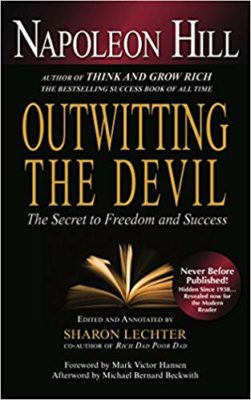
Outwitting the Devil: The Secret to Freedom and Success
He got good at it. The campaign ended in November. In January, we had wallets in our hands that we could sell. He started running Facebook ads and it started turning. At the time, it was the golden age of Facebook ads where it was ten or fifteen to one return. It was like printing money. We’re spending everything and kept going. In the first year, we ended up making $1.5 million on $20 wallets because Facebook ads were crushing it. I quit my job six months later. The beauty of Kickstarter is you could launch a product. You don’t have to go and make inventory. You can see that people like it. You get the cash up front and you go on manufacture. The risk is so low.
Through that experience because Facebook changed how all that works, the ads got more expensive. What did you discover about your customer, the audience that was buying? Was it them responding to a video or responding to language? You use certain demographics and tested those because in Facebook, you can get very granular as far as who you targeted. Talk us through how you identified your customer.
Facebook identified the customer for us. We used the Lookalike Audiences. We took all the emails. That was the other cool part because we had a $170,000 campaign. We ended up with 8,000 backers. We had 8,000 emails right from the start, which is a hard thing to get when you’re a new entrepreneur. People actually bought your product who are interested in your brand.
Kickstarter gave you the email addresses.
Yes, we plugged those into Facebook, the Lookalike Audiences. From that, you get 10 million people who look like your audience and you start serving ads. That did the work for us, which was nice. We did learn a lesson throughout it. We launched the wallet. We launched the planner and both of those had features, something that was different like how you pull the tab and you get access. Our notebooks had pen holders and there were sleeves in the back, whiteboard paper, a lot of features and functions.
After that, we launched a watch. It was a minimalist watch that didn’t have a lot of features and it tanked. We learned that for us, that innovation, that feature-rich product was the novelty. The novelty feature is what piques somebody’s interest. We learned that on Facebook. We started an ad agency where we were running Facebook ads for other companies. That’s the entrepreneur in me. It’s a sickness I can’t stop. We learned that for companies that we focused on, we had a niche of companies who were on Kickstarter then went to their own website. We only ran their Facebook ads and not other companies. If you’re selling a t-shirt that has prints on it, it wasn’t innovative. On Facebook, you wanted something eye-catching and different and a story behind it. By having something innovative, that was Kickstarter-worthy, it made it better on Facebook ads because there’s that innovation. It’s that special something that made a difference that caught people’s eye.
Did you ever launch something that wasn’t successful or as successful? You did the watch.
The watch wasn’t on Kickstarter though. We launched that on our site. We expected it to be less. We didn’t expect it to do that bad. In order to go on Kickstarter, you need something innovative. You can’t be on there if it’s not because they’ll shut you down. We had a friend who launched a watch and got shut down because Kickstarter said it wasn’t innovative enough. There’s that requirement, that prerequisite. On Kickstarter, fortunately, the wallet was our lowest campaign at $170,000. Now we’ve done nine. We’ve raised over $10 million through Kickstarter, which has been awesome.
How did you go now from a wallet, which is very minimalistic to the planner, to this complex bag? That’s minimal. This complex bag has pockets galore protections like the RFID protection for identity.
Virality is luck. Click To TweetIt’s the Swiss Army knife of bags.
I got this bag because it was the newest bag and it had some other things in there that the first one didn’t have. How did you go from simplistic to something more complex?
Our process has always been very data-driven and based around Kickstarter. Kickstarter is our demographic. With the first one, we said, “We’re launching on Kickstarter. What product does well regularly on Kickstarter?” We found that wallets always funded, whether it was a $5,000 goal, $10,000, $20,000. There were campaigns that were making 500,000 on wallets. We’re like, “There are many of them. They always work. Let’s try that one,” so that worked.
After we finished this campaign, we’re like, “What product is next? The planners are doing well.” We did the planner next. We saw that bags were doing well so we jumped into bags. The other piece that drove it too was the Facebook ad cost was rising. We needed a higher price point item. We always said each campaign needed to be at a higher price point and had to be things that do well on Kickstarter regularly. That’s the direction and how we ended up any of the price we did. That learning curve of going from a simple wallet to a complex bag was pretty steep. It took time. Every bag we develop takes about a year to develop.
How did you do that concept development? Have you had some dream and you’re like, “I see this bag with a bunch of pockets in there?” Are you using some process to say, “What’s a product that people or a customer needs? Let’s develop it from there.” Walk us through that process. I’d be curious about that.
Whenever we decided we’re going to develop a product, we have a process that we follow where we say, “Let’s look at all the best bags that we can find out there. Let’s buy them all and look and study them.” We create big surveys that we use Google sheets, Google forms. We create surveys where we say, “What’s in your bag right now?” We’ll ask that question and say, “What type of bag do you carry? Do carry this in your bag?” It’s tons of questions. “What’s the best feature you love about your bag?” We’ll survey like crazy and get tons of information that way. We figured out how to take all the current bags that the people like and grab the best pieces and make a Frankenstein approach, but make it look clean and sleek at the same time.
It sounds like the price point was going to luggage. How did you go to luggage? What was that decision process like?
On the wallet, we’re at $170,000 on Kickstarter. We did $380,000 with the planner. With the travel bag, we have $1.7 million and raised another $1.5 million on Indiegogo. We’re like, “We’re a bag company now. That’s all we’re going to focus on. Our tagline for that was, “The most functional travel bag ever.” We’re saying, “We’re going to make the most functional bags ever.” We made the travel bag like the duffle. We’ve made backpacks and messenger bags. We’re knocking out each bag. Every home has at least one of these bags. We went through it sequentially and luggage was the last one on the list, but also the toughest. We saved that for the end because going into plastics and all that is not easy.
I know there’s a bunch of Kickstarter where they developed smart bags. They have battery and it totally tanked because of regulations stepping in.

Starting An Online Business: Having something innovative and Kickstarter-worthy makes a difference that catches people’s eyes.
There were a couple of companies that went out of business overnight because of that.
I remember going to the airport once with a bag like that and I had to have my wife come pick the bag up.
It was a sad for them, but it was great for us because a lot of those were male-focused brands. A lot of them had to disappear. It paved the way like it was right when we were thinking about doing it. We’re like, “Let’s hit it hard.”
What’s next for Nomatic? What are you thinking? What are you working on? What are the things to expect in 2020?
We launched one of our biggest campaigns ever. We launched the Peter McKinnon camera bag. Photography is a big next step for us that we’re excited about. It’s fun going into a niche where a community exists, where everyone’s doing photography and the bag supports that hobby well. We’re excited about that. We’ve did a travel pack on that one. It’s more of a travel photography bag, so we’re looking forward to do everyday type of bags and gear with Peter. That’s a big thing.
Also, we loved working with someone like Peter McKinnon. He has six million followers. He’s an opinion leader inside of this community. We’re trying to see what other communities resonate with our audience. We’ve talked about gym, tech, minimalism, sustainability, those types of things and say what other big awesome people exist out there that embodies those verticals and try to see if any of them like the Nomatic brand. The cool part with Peter was he was already buying our stuff organically. We brought them in and made a bag with them. In the future, we’re hoping to do more of that type of stuff. Find communities and create bags around them with key opinion leaders to be the face of it.
I was telling you a story about the cultish side of Nomatic. I was in Amsterdam at an event and there was a guy that was on my row. I looked over and I saw his bag. I’m like, “Why is my bag over there?” He had a Nomatic bag. I looked at it and I looked at him. He looked at my bag. He looked at me, then we did the bro nod. What are some examples that you’ve seen out there? Have you tried to figure out ways in which you capitalize on that?
I love that story because it’s exactly what we’ve had talked about in our conferences. As motorcycles drive by, they look at each other and give a peace sign. They have this brotherhood where they’re like, “We’re brothers. We’re the road warriors. We’re doing this.” We want that feeling of Nomatic is all about life on the move where life on the move is more than physical movement. It’s a way of being, constantly growing, developing and becoming more. We want people that when you see someone with a Nomatic bag they’re like, “That guy is doing cool stuff. I like that guy.” If you have one and you’re like, “We’re changing the world here.” We want that feeling.
That’s certainly a push for them. We do have some of our ambassadors like Lewis Howes and those guys. We do Life on The Move videos where we talk about these people that are changing the world. They’re doing cool things. We do big videos on our YouTube channel where are we tell their story. We don’t push the product at all. We just say, “Here’s how this person is doing cool stuff.” We have this culture of how people involved with Nomatic aren’t your average people. They’re exceptional individuals. That’s some words we’re trying to push with the brand because we believe that people who are like that want quality gear. They want to be organized. They want to have their whole life. It gives you confidence as you travel.
Changing people's lives by creating opportunities where we can have a fun place to work is the best feeling in the world. Click To TweetIt makes sense based on how you do product development where you go find all the bags that are out there and find other stuff that’s out there that you would compete with. You take all the goods and leave all the bag and make it look cool, which is profound because that’s why I bought mine. I didn’t know you are a Utah company. I just looked at a few different bags and I knew exactly what I wanted because I had experienced bad bags. That’s what I came across. It’s been a cool experience since. I didn’t know you had luggage. Walk us through some of the more challenging pieces of your entrepreneur journey. I’ll tell mine while you’re thinking about yours. For me, it’s been relationships because I work alongside people. I’m not from Utah, but I consider this my second family. I become friends with people.
When friction starts to happen or when we have different opinions of this, that and the other, that’s been challenging for me. Hiring is something I’ve focused on for the last couple of years. We used programs like Topgrading and we have ways in which we go about doing interviews to hire the right people. Some of the people we have now are amazing from day one. A lot of it comes down to seeking those that align with your culture, your values, but also were good at what you’re hiring them for. I thought a job description was like Google “marketing person, job description” and copy paste. That got me in a lot of trouble with a lot of different positions. What’s been some of the biggest challenge I’ve faced is parting ways with people I considered friends. What are maybe some of the things that you’ve experienced that had been difficult to overcome?
It’s not to take the same thing, but I would say it’s working with a team, rallying a team around you, getting them excited, getting them aligned, even the vision there so that everyone is excited to be there. When they celebrate a win, they’re celebrating the right win. It’s tough to figure out how to get people excited. It’s scary too when you bring someone on your team, you’re making commitments to each other. You’re like, “I’m bringing you on because I believe in you. I’m going to keep you employed here and I hope that you succeed. I don’t want to let you go the next day. I want to provide an awesome place for you to work and you’ll love it here.” That’s what I’m committed to do and they’re committed to work hard and help build value.
That’s tricky when you want to help people. Getting them aligned in the vision altogether is hard. Everything else, I feel like all of it is hard. People will say, “I want to be an entrepreneur and I’m going to do this.” They say, “By this time, I’ll have this and this.” You’re like, “It’s so hard. It takes so much longer than you think.” Nothing is easy but I feel like everything else, like you can put it on a checklist and say, “Do this, then do this,” and a lot of things. Working with people and being a human, engaging with them and helping them want to be a part of the team is tough. It’s the highest highs and the lowest lows. When it’s good, it’s good. When it’s hard, it’s hard.
It’s one of those things where relationships are what make the world go round. A lesson I’ve learned several times is people aren’t going to care as much about the brand and the direction as you are, even though you want them to. For me, it’s layering on expectations that they should have based on what I would set as expectation. It’s not necessarily that there are expectations. That’s why it’s profound as you onboard people and you talk about your values and what you want for people, how you want them to operate and work together. Those are the expectations and it’s setting that from day one. The expectations will exist. Either you create them or they will create themselves, but you have no control over that. That’s been a huge lesson. The people are part of a business. Getting the people game, understanding the psychology of how people work, how they’re motivated, it is a challenge, but it’s also fun.
You have to realize how bad you are. No one is intuitively great. Everything is business. People might be good at 10%. They can excel in those things, but it’s another 90%. It is so painful how often you have to look at yourself and you have to say that you’re the problem. You have to recognize your fault in it because it’s never just someone else’s fault. If you’re saying that, you’re always wrong. You play a big part. As a leader especially as we’ve grown from six people to eighteen people on the team, many times I’m like, “I am so bad at this. How do I get better? What books can I read?” You try and try and it’s hard. You have to realize that you’re going to keep going and you’re going to keep failing, learning, growing and try to become better and try to be fair to people.
It’s interesting because it’s clear that you embody your values by saying some of the things that you’ve said because clearly the success that you have has not come by not knowing what you’re doing. Obviously, you know what you’re doing in a lot of different ways. I also say that something I’ve resonated with as we’ve talked about entrepreneurship and doing some self-reflection. Where you want your company to go and who you want them to be together cannot outpace you. It can’t be at your level. In order for it to grow, you have to grow first. You can’t lead a person to a place that you haven’t been to. When I connected that, that’s where it’s reading, studying, events, coaching made such a difference. I realized I had to break thresholds in order for the team around me to break their threshold. It sounds like you’ve resonated with that as well. What are some of the things you’ve done to expand your capacity as a leader? Humility and understanding your values first are huge.
The thing that I’ve been trying to focus on more and more, it’s in my mind right now because I’m working through as I’m preparing for 2020. I have this goal of having a fresh start with a new year. It’s a lot of first recognizing what’s wrong, talking with your employees and seeing where I am falling short, being open to listen to them. It’s amazing what you don’t know is happening behind all the office closed doors. I’ll talk with some of our employees and learn all kinds of stuff I didn’t know existed. Having those conversations is huge. Everything they’re saying, there’s always a grain of truth to it even if it hurts, if it’s wrong. If you feel it’s a lie, there’s always a grain of truth to it and you can’t ignore any of it.
If it’s exaggerated, it’s still an exaggeration of something that could be true.

Starting An Online Business: Recognize what’s wrong, see where you’re falling short and be open to listen to your employees. It’s amazing what you don’t know is happening behind the closed office doors.
It’s something that I did or someone else did. There’s a part of the system that’s broken that has to be fixed. As far as growing myself, I always go back to that humility of saying, “These are the faults.” A big piece is communication. Another thing we always say is, “If there’s a problem, come and talk to us. Don’t let it fester. We will never be angry about that.” We live by that. When people come and talk to us, we’re never angry. We say, “Thank you for telling us how do we fix this.” We create plans together like, “I’ve learned that I’m not giving enough recognition to some players on my team and I need to recognize them more, so how do I do that better?” It’s talking with their directors to say, “What systems can we put in place?” It’s open communication about everything and whenever someone comes with a problem, never let yourself think that it’s not true. It always is.
It’s the nature of the feedback loop. There are many instances of that in different parallels. John Boyd is the one that popularized the feedback loop. It’s his OODA Loop, which is Observe, Orient, Decide and Act, and it loops back. The more feedback you can get, the quicker the feedback. That’s the nature of the team because everyone brings a perspective of life to the table. We all have our what’s right, what’s wrong, what’s good, what’s bad, what’s success, what’s failure, what incentivizes me, what doesn’t incentivizes me. The more communication, the more openness that you can feed that, the quicker you can either talk about it and communicate in a way that people understand then you can move forward. The last thing you want is some sliver in a person’s thumb. It’s so small, tiny and insignificant, but yet it’s so annoying. You can’t do anything. Do you do SWOT analysis with Strengths, Weaknesses, Opportunities and Threats with your team? Do you do the Net Promoter score? What are some of the things you do to get feedback from your team?
Early on we tried to do one-on-ones frequently and talk through what’s going on with everybody. We’ve gotten bigger. We’ve tried to learn. What I’m learning right now is we’ve gotten bigger and now had directors over multiple people and I’m over the director. That’s been an interesting thing to be one more step away from the people on the front lines. When I had one-on-ones, I could get a pulse if that person is happy or not. Now that I say this, I hope that my directors are savvy in human connection enough to be able to feel, “This person isn’t happy and I need to fix that.” You don’t know. For us, it’s constant communication. We don’t have a big format, which is what I’m trying to do for 2020. It’s trying to constantly communicate on a regular basis and have something on the calendar that says we’re going to meet at this time every month. They can rely on that. It’s huge.
There are ways in which you can do it, but it has to work with the company based on what the culture is. It’s totally true. When you start to go from the distance of one-to-one to once removed, twice removed, three times removed, it becomes challenging, especially if you connect with people at that level. That’s part of the journey. Part of those stages is you go from being in the business to working on the business, but as far as scaling and making the biggest difference, you go from connected to the customer and connected to the company and employees to connected to as much of the customer as possible and to those level of employees, the director levels, the executive levels that then carry the message forward. We could probably share a lot of war stories. It’s part of the journey.
My favorite thing is when you set up those multiple layers, it works. When something works, it’s the most incredible thing. Everyone along the line is happy and everyone feels rewarded. It’s so beautiful when it works. It’s the best feeling and you’re changing people’s lives by creating opportunities where we can have a fun place to work. That’s what it’s all about. For me, as I’m doing entrepreneurship, I created a wall and I laugh like, “It comes into my life.” I’m like, “I created a wall in my life.” That’s not what it is. You’re working with these people and changing their lives, creating relationships and creating a good life for yourself and everyone around you. That’s what it’s all about.
There’s a dynamic of team. If you look at individual sports versus team sports, even in individual sports like golf, you see these little cliques and groups that form. Why does the President’s Cup exist? Because people want to be part of a group or a team. You look at some of the most iconic teams in history, obviously the Jazz with Stockton to Malone and those iconic players that worked so well together. The Chicago Bulls and their dynasty and you still see it to a degree. The Jazz right now, they had an incredible team and incredible leadership. When some of those players start to not do so well, sometimes the whole team and the whole structure falls.
When everybody is picking up the pieces and supporting one another, it’s amazing how it re-energizes the entire team. When I look at a business and taking something that didn’t exist, turning it into something that does exist that people like and love and you have a cult following behind it, people participating in that is super empowering. It’s one of those feelings that feeds that entrepreneurial hunger. It fulfills you, but it makes you hungrier. It’s the same thing. If you didn’t make mistakes, if you didn’t fall short, if you didn’t fail in certain capacities, you’re not going to enjoy that.
When you fail and then you make it work and your teams sees the progress, it’s so good.
There’s a quote we used on one of the episodes as far as the depth of your feeling or experience. The deeper you go as far as failure and experience, the more can you expand on the other side of the spectrum. There’s total truth to that when it comes to business. It’s like stretching yourself. It’s like building muscle. You tear with heavier weights. In order to lift even more heavier, you have to tear it first and go deeper. It’s awesome to hear your story and I’m grateful for you coming in and sharing it with us. How do audience buy bags from Nomatic? It’s such an awesome product. How can they learn more about Nomatic? How can they follow you and see what you are up to on social media? What’s the best way to for them to connect?
Go to Nomatic.com, our website. You can buy a product there. At the bottom, you see our social feeds. We are @Nomatic on Instagram. We have a YouTube channel where we have those Life on The Move videos. We highlight a lot of entrepreneurs. We’re doing cool stuff, some local ones, some that aren’t local and we talk about that. You can get to understand what our culture is all about and stuff. Check us out on YouTube, Instagram and our website.
Jacob, it’s awesome to have you here. It’s a pleasure to meet you. Thanks for what you’re doing and championing the entrepreneurial spirit. It’s inspirational and motivational.
Thanks.
Everyone, thanks for tuning in. We’ll check in with you on the next episode. Until then.
Important Links:
- Unleash The Power Within
- Craig Ballantyne– Past episode
- Devinsupertramp
- Outwitting The Devil
- @Nomatic on Instagram
- YouTube channel Nomatic
- https://www.TonyRobbins.com/events/unleash-the-power-within/san-jose/
- https://www.Nomatic.com/
- https://www.Facebook.com/nomaticproducts/
- https://www.Instagram.com/nomatic/
- https://Twitter.com/nomaticgear
- https://www.YouTube.com/channel/UCo_Klfyk176lWoezGbbcIAw
- https://www.LinkedIn.com/company/nomatic-llc
- https://www.LinkedIn.com/in/jacob-durham-7269344a/
About Jacob Durham
 Jacob Durham is the owner and co-founder of Nomatic. Nomatic began when two cousins — Jon Richards and Jacob Durham — designed an innovative wallet and launched it on Kickstarter. They expected to get about 50 orders, but over 6,000 people backed their campaign. Since then, they have launched multiple crowdfunding campaigns and shipped product to hundreds of thousands of people worldwide.
Jacob Durham is the owner and co-founder of Nomatic. Nomatic began when two cousins — Jon Richards and Jacob Durham — designed an innovative wallet and launched it on Kickstarter. They expected to get about 50 orders, but over 6,000 people backed their campaign. Since then, they have launched multiple crowdfunding campaigns and shipped product to hundreds of thousands of people worldwide.
Nomatic has continued to innovate products by listening to what consumers want, prioritizing quality, and creating the most functional products ever.
Love the show? Subscribe, rate, review, and share!

